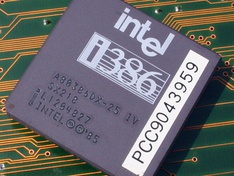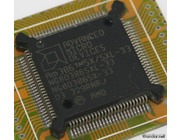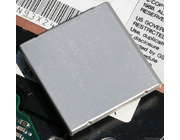| The 386 is the first 32-bit x86 processor. It was introduced by Intel in October 1985 but working chips were delivered in the third quarter of 1986. When the 386 was new, it was expensive because of the complexity of the chip and the complexity of motherboards. It took a while for motherboards to become less complex, which helped sales tremendously. The 386SX, which was 32-bit internally but used a 16-bit data bus, helped sales too. With the 386 the difference between SX and DX was the difference with the data bus. With the 486, both versions used a 32-bit data bus but the SX didn't have a mathematical processor whereas the 486DX did have one. The right photo shows a typical Intel 386DX 25MHz CPU. |  |
Three operating modes are available on the 386: real mode, protected mode and virtual mode. The protected mode on the 286 was limited because the 286 could not switch back to real mode. Intel fixed this issue with the 386.
Trivia:
1. Intel intended to release the 386 at 16MHz but introduced it at 12MHz due to poor yields.
2. The very first 386 processors had a bug which returned incorrect results from 32-bit multiply operations. Not all processors were affected, but the ones that had the bug were marked "16 BIT S/W ONLY". The bug-free processors were marked with a double-sigma (??).
3. The 80387 (mathematical co-processor; FPU) was not available at the introduction of the 80386. Early motherboards provided a socket for the 80287.



























